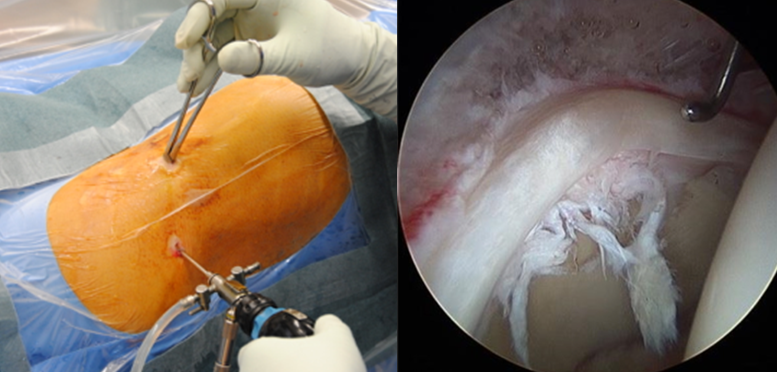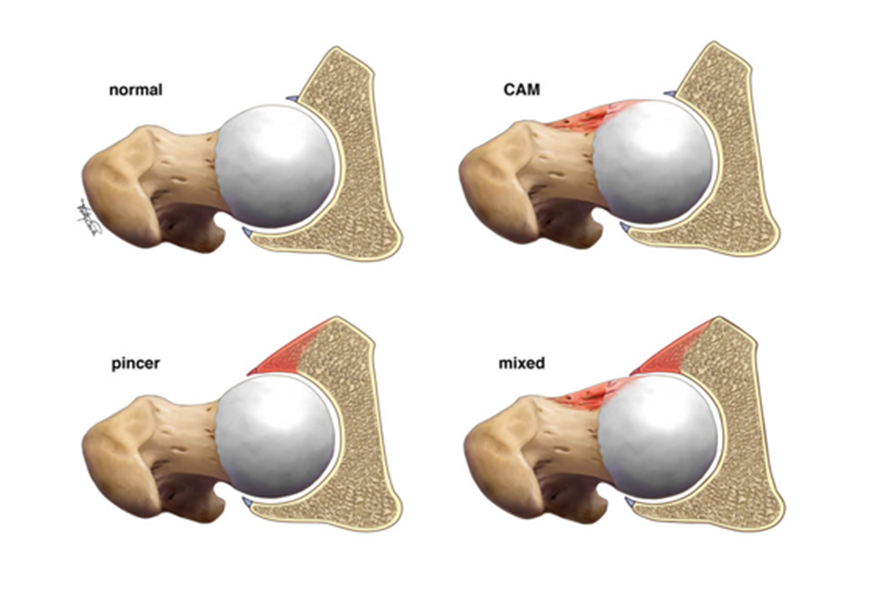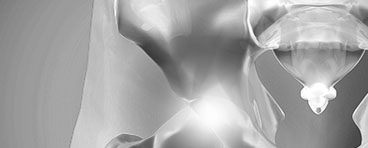Click on the links below to find out more
OVERVIEW
A minimally-invasive surgical procedure used in the diagnosis and treatment of a wide range of hip problems, hip arthroscopy allows Dr David Slattery to inspect the interior of a hip joint without the use of large incisions through skin and soft tissue. Dr Slattery has received fellowship training from internationally recognised European and Australian leaders in hip arthroscopy, giving him a depth of knowledge on this technique.
A Specialist in Hip Arthroscopy in Australia
Dr Slattery is known for his skills as an orthopaedic surgeon not just in Melbourne but in Australia. Therefore, if you are seeking a specialist in hip arthroscopy in Australia, you need to look no further. Throughout his career, he has delivered high-quality surgery and care using the latest surgical techniques, including robotics, 3D computer navigation and 3D printing and uses both anterior and posterior approaches to hip replacement to ensure his patients achieve the best possible outcomes. Dr Slattery welcomes patients from all over Australia and during his time as an orthopaedic surgeon has treated many elite athletes, AFL players and international cricketers, so you can rest assured that you’re in the most competent of hands when you entrust your hip arthroscopy in Australia to Dr Slattery.
As a leader in hip arthroscopy, Dr Slattery is actively involved in many research projects to learn as much as he can about hip disorders and use his findings to inform and teach the wider community. He’s also published many papers in a number of journals on a wide variety of orthopaedic topics and regularly helps junior doctors, registrars and medical students to improve their surgical knowledge and gain more experience.
Hip Arthroscopy Surgeons in Melbourne
Many of us experience issues with our hips, particularly as we age. Pain in the hips can also be caused by a number of medical conditions or trauma. This can seriously affect our mobility and our quality of life.
If you’re experiencing hip pain that doesn’t respond to non-surgical treatments, such as rest, physical therapy and anti-inflammatories either in medication or injection form, hip arthroscopy surgery may be recommended. It can also be used to investigate and treat pain that arises after a hip replacement.
As one of the leading hip arthroscopy surgeons in Melbourne, Dr David Slattery has a wealth of experience and knowledge in this particular technique, having undertaken fellowship training with internationally recognised Australian and European experts.
Don’t put up with the pain any longer; arrange a consultation via the online contact form or at one of his consulting rooms. Whether you are seeking help from a professional for the first time or need a second opinion, we can assist.
What is Hip Arthroscopy?
Hip arthroscopy is a minimally invasive surgical procedure that can be used to diagnose and treat a wide range of hip problems. Arthroscopy hip surgery enables the surgeon to inspect the interior of the hip joint without the need for large incisions into the skin and surrounding soft tissues.
During the procedure, a series of keyhole incisions are made through which the arthroscope (small camera) is inserted. The images from the arthroscope appear on a video monitor. The surgeon is able to direct his miniature surgical instruments using these images as a guide. Using such small instruments, allows the surgeon to use very small incisions. This means less pain, less joint stiffness and a quicker recovery time than traditional surgery which uses larger incisions.
The Benefits of Hip Arthroscopy Surgery
Hip arthroscopy is often used to relieve the painful symptoms experienced when patients have issues with the cartilage, labrum or other tissues surrounding the hip joint.
Some of the issues investigated and treated by hip arthroscopy surgery include:
- Labral tears – where the labrum (a tough type of cartilage) becomes detached from the underlying pelvic bone
- Hip dysplasia – when the hip socket is abnormally shallow the labrum is more susceptible to tearing
- Tendinitis of the psoas – irritation of the tendon of the psoas muscle that’s often caused by total hip replacement procedures
- Synovitis – inflammation of the hip joint
- Trauma – caused by high impact
- Femoroacetabular impingement (FAI) – an overgrowth of bone on the femoral head or acetabulum which damages the surrounding soft tissue of the hip. If left untreated, it can potentially lead to arthritis
Hip arthroscopy can also be used to investigate and treat a range of other problems of the hips.
Dr David Slattery, One of Melbourne’s Leading Hip Arthroscopy Surgeons
As an experienced Orthopedic Doctor in Melbourne, Dr David Slattery specialises in hip arthroscopy, having spent the last ten years undertaking many procedures of this type. Dr David Slattery also provides robotic total hip replacement surgery and hip total replacement surgery. He’s also a fellow of The Royal Australian College of Surgeons and the Australian Orthopaedic Association, so you feel confident you’ll be getting excellent treatment from a surgeon who places a high priority on providing patient-centred care. Open communication is key to his relationship with his patients, and he’s fully committed to giving you all the information you need to make an informed decision about your care and proposed treatments.
During hip arthroscopy, a series of small cuts referred to as keyhole incisions are made and a small camera, called an arthroscope is inserted into your hip joint. The images from this camera are broadcast to a video monitor, which Dr Slattery uses to guide miniature surgical instruments.
Because the arthroscope and surgical instruments are thin, your surgeon can use very small incisions, rather than a larger incision needed for open surgery. This results in less pain, less joint stiffness, and shortens the time it takes to recover.
Mr Slattery may recommend hip arthroscopy if you have a painful condition that does not respond to nonsurgical treatment. Nonsurgical treatment includes rest, physical therapy, and medications or injections that can reduce inflammation.
The length of the procedure will depend on what is found and the amount of work to be done. At the end of surgery, the arthroscopy incisions are stitched closed. An absorbent dressing is applied to the hip.
How hip arthroscopy can help you
Hip arthroscopy can relieve painful symptoms from the labrum, cartilage, or other tissues surrounding the joint, it can also be utilised to investigate and treat pain coming from hip replacements. Minimising the size of the incision means that recovery from hip arthroscopy may be faster than techniques requiring large incisions through skin and tissue.
Conditions which can be treated using hip arthroscopy include:

Left: An arthroscopy is performed through keyhole incisions. Right: A photo taken with an arthroscope showing damage to the labrum and cartilage inside of the hip joint.

Femoroacetabular impingement (FAI)
A disorder in which extra bone develops along the acetabulum (pincer impingement) or on the femoral head (cam impingement). This overgrowth of bone causes damage to the surrounding soft tissue of the hip during movement, potentially leading to a predisposition to arthritis. More information
Labral Tears
What Is a Hip Arthroscopy Labral Repair
Surgically correcting to repair a hip labral tear involves the use of an arthroscope – a small camera device that identifies the location of the tear. During the surgery, some small incisions are made by renowned orthopedic surgeon in Melbourne Dr Slattery to allow access to the affected area.
As the camera is small and the surgical tools are precision instruments, the incisions are much smaller than wounds from open hip surgery. Dr Slattery uses this technique for hip arthroscopic labral repair, as well as the diagnosis and treatment of other hip injuries.
There is a small risk assumed with any surgery, however, this minimally invasive technique, reduces the likelihood of infection and complications as compared to more invasive techniques such as open hip surgery.
Recovering After Your Hip Arthroscopy Labral Repair
Before having surgery to repair a hip labral tear, your quality of life has steadily declined. The pain combined with stiffness and reduced motion range is a difficult adjustment to make. but in just a few short weeks after surgery, you can begin to feel like your old self again.
All recovery times are dependent on each individual. It largely centres on your overall health and fitness before undergoing surgery. For the first two – six weeks after a hip arthroscopy labral repair, you may find there is still some pain, however, this will reduce over time as the wounds from surgery begin to heal. You may depend on crutches for the first few weeks, as your repaired hip gradually increases the amount of weight it can bear.
After surgery, you will have the opportunity to undergo physiotherapy and can raise any questions you may have during routine post-op consultations with Dr David Slattery.
Dysplasia
A condition in which the hip socket is abnormally shallow. This results in greater stress on the labrum in order to keep the femoral head within the socket, making the former more susceptible to tearing.
Psoas Tendinitis
Frequently caused by total hip replacement, this is an irritation of the tendon of the psoas muscle at the front of the hip
Snapping hip syndrome
A condition characterised by a snapping sensation felt when the hip is either flexed or extended, caused by a tendon rubbing along the outside of the joint. Often harmless and not requiring treatment, in some cases the tendon may be damaged from the repeated rubbing.
Synovitis
Inflammation of the hip joint.
Loose bodies
Fragments of bone or cartilage become loose and move around within the joint.
Trauma
High energy trauma can cause damage to the hip joint, which can in some cases be addressed with the use of hip arthroscopy
Hip joint infection
Arranging a consultation for a hip arthroscopy in Melbourne
Communication is central to Dr Slattery’s practice, and he endeavours to thoroughly discuss the process with patients during their appointment to find the ideal solution. During your consultation, Dr Slattery will assess you individually, addressing your unique needs while discussing the best option for you.
When you’re ready to arrange a consultation for your hip arthroscopy, please contact one of Dr Slattery’s Melbourne consultation rooms, or make an appointment via our online enquiry form.

Dr David Slattery
FRACS MBBS (Hons) LLB FAOrthA
Dr David Slattery is an orthopaedic surgeon based in Melbourne with over 10 years of experience, with a special focus on hip and knee joint preservation and replacement. With qualifications in both medicine and law, he brings a unique and comprehensive approach to patient care. His surgical techniques are minimally invasive and evidence-based, designed to reduce pain and enhance recovery.
Trained in leading institutions across Europe and the USA, Dr Slattery offers advanced treatments for a wide range of joint conditions. He is deeply committed to patient outcomes and takes pride in tailoring treatment plans to each individual. Whether you’re an athlete or seeking relief from chronic joint pain, his goal is to restore function and improve your quality of life.







